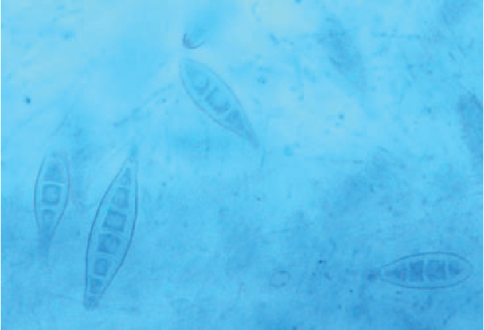Learn all about microsporum canis pictures, symptoms, causes, transmission and treatment. Microsporum canis is a cosmopolitan zoophilic dermatophyte, the natural reservoir of which is cats and dogs. However, it also causes human infections and is a major agent of tinea capitis, as well as being commonly involved in tinea corporis.
Microsporum canis has no specific growth factor or nutrition requirements; hence it grows well on most commercially available media. In addition, M. canis exhibits rapid colony growth at 25 °C. Two growth media that help distinguish M. canis from other Microsporum spp. (notably the morphologically similar species, M. audouinii) – specifically polished rice and potato dextrose agar.
A fungal infection rarely spreads below the surface of the skin to cause serious illness. But people with weak immune systems, such as those with HIV/AIDS, may find it difficult to get rid of the infection. Direct or indirect contact with skin or scalp lesions of infected people, animals or fomites (i.e. floors, shower stalls, clothing, hairbrushes, etc.) contaminated with desquamated epithelium. In individuals with suppressed cell-mediated immunity, infection may occur via broken skin.
Microsporum canis evolved as a result of host-specific interactions, changes in ecological niche, as well as, geographic isolation of + and – mating types of Arthroderma otae, hence making it difficult to sustain sexual reproduction. Microsporum canis generally invades hair and skin; however, some nail infections have been reported. When hair shafts are infected, M. canis causes an ectothrix-type infection where the fungus envelopes the exterior of the hair shaft without the formation of internal spores.
This colonization of the hair shaft causes it to become unsheathed, resulting in characteristic round or oval non-inflammatory lesions develop on the scalp. Infection triggers an acute leukocytic reaction in subcutaneous tissues, which gradually becomes highly inflammatory and leads to hair loss, in the case of tinea capitis. Infections in animals due to Microsporum canis manifest as Ringworm and can cause a scaly, crusted rash that may appear as round, red patches on the skin.
What is Microsporum Canis?
Microsporum canis, for which the natural hosts are cats and dogs, is the most prevalent zoophilic agent causing tinea capitis and tinea corporis in humans.it is a worldwide diffused zoophilic dermatophyte which causes clinical conditions often characterised by multifocal alopecia, scaling and many circular lesions in many animal species including human beings. Microsporum canis species have a worldwide distribution. Extremely high occurrence has been reported in Iran, while lower incidence is associated with England and Scandinavian countries, as well as South American countries. Microsporum canis is uncommon in some parts of US and Europe, and is completely absent from equatorial Africa.
Microsporum Canis Pictures
Microsporum Canis Causes
Microsporum canis is among the most common dermatophytes associated with tinea capitis and tinea corporis. Unlike some dermatophyte species, M. canis typically does not cause large epidemics. Humans become infected as a result of direct or indirect contact with infected pets. Microsporum canis generally invades hair and skin; however, some nail infections have been reported. When hair shafts are infected, M. canis causes an ectothrix-type infection where the fungus envelopes the exterior of the hair shaft without the formation of internal spores. This colonization of the hair shaft causes it to become unsheathed, resulting in characteristic round or oval non-inflammatory lesions that develop on the scalp.
Infection triggers an acute leukocytic reaction in subcutaneous tissues, which gradually becomes highly inflammatory and leads to hair loss, in the case of tinea capitis. It can be caused due to:
- Skin-to-skin contact with an infected person or animal
- Sharing of towels, clothing or sports gear
- Contact with infected household items, such as a brush, pet clothing, towels and furniture.
Microsporum Canis Transmission
Cats and dogs are the main sources of infection. Invaded hairs show an ectothrix infection and fluorescence a bright greenish-yellow under Wood’s ultra-violet light. It can also be transmitted to humans through direct and indirect contact with animals and fomites such as combs, brushes, hats, furniture, linens etc. The greatest risk factor for acquiring infection is contact with damaged cells on skin, hair and nails. Microsporum canis can infect all mammals.
Microsporum Canis Treatment
Microsporum canis treatment depends on causes and severity of infection. Microsporum canis infections can be easily managed by topical antifungal agents; however severe cases may necessitate systemic therapy with griseofulvin, itraconazole or terbinafine. Mycotic scalp infection caused by Microsporum canis is the most dominant cause of tinea capitis in Greece. Griseofulvin has been the gold standard for the treatment of tinea capitis, but it is unavailable in our country. Terbinafine hydrochloride is commonly used in the treatment of microsporosis. Its fungicidal action permits short period of treatment.
 Health & Care Information
Health & Care Information 


